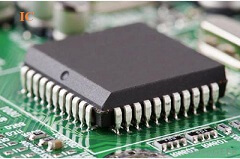Last Updated on August 21, 2023 by Mayank Dham

The field of engineering experienced a significant surge in advancement and transformation following the emergence of computers. The evolution of computers and technological progress can be categorized into distinct generations, each marked by distinctive attributes and novel technological breakthroughs in contrast to the preceding generation. Computers can be classified into one of five distinct generations:
- First generation of computers
- Second generation of computers
- Third generation of computers
- Fourth generation of computers
- Fifth generation of computers
These generations exhibit variations in their architecture, programming languages, specifications, operational methodologies, performance levels, and more. This article will focus on the third generation of computers.
Third Generation of Computer
The third generation of computers switched from the transistor technology used in computers of the second generation to integrated circuits. From around 1964 to 1970, it took place. An integrated circuit is a tiny chip that serves as the distinguishing feature of third-generation computers. The integrated circuit used in third-generation computers can serve as a CPU, amplifier, or even computer memory. In 1959, Fairchild Semiconductor’s Robert Noyce and Texas Instruments’ American electrical engineer Jack Kilby invented the first integrated circuit concept. The integrated circuit, which is a single device with numerous transistors, revolutionised computing in the 1960s. As seen in the figure below, the integrated circuit looks like:

The technology used in the third generation of computers makes them more dependable, effective, and compact as compared to the first and second generations. Additionally, in comparison to the first two generations of computers, the third generation’s computers utilised integrated circuits and had attributes including quicker speed, dependability, heat-generating efficiency, and less maintenance. They used less power, but it was still expensive, and air conditioning was required.
The IBM-360 series was perhaps the most significant computer of the third generation since it was the fastest and most powerful system in use at the time. Some claim that the IBM System/360, which was unveiled in 1966, was the first of the third generation of computers. This machine cost around $5 billion to create, which was paid for by IBM. This computer was specifically created by IBM to handle fast data processing for scientific applications including subatomic physics, theoretical astrophysics, space exploration, and global weather forecasting. It offered a single computer architecture for a group of devices, which was not a novel approach to computer architecture.
In compared to the ENIAC, the IBM System/360 Model 50 was 263 times faster in terms of speed. This IBM model was $4,140,257 in today’s money, and it was capable of 500,000 additions per second. IBM predicted that the Model 91 will be able to do about 200 billion computations and solve more than 1,000 problems.
The core processor of the third generation of computers required a number of integrated circuits to be built. It wasn’t until the fourth generation that the concept of packing a whole CPU onto a single silicon chip emerged. The third generation of computers also made use of the multiprogramming operating system, time-sharing, and remote processing. High-level programming languages including ALGOL-68, FORTRAN-II through IV, BASIC, COBOL, PASCAL PL/1, and others were employed during this period. Third-generation computers also include the PDP, Honeywell-6000, and DEC series.
Features of Third Generation Computers
As integrated circuits were used in the creation of third generation computers, a number of characteristics were made possible, including the following:
- The third generation of computers featured integrated circuit technology rather than individual transistors.
- Computers of the third generation were more affordable, more compact, lighter, quicker, and more effective than those of the second generation.
- High-level programming languages were implemented, including ALGOL-68, FORTRAN-II through IV, BASIC, COBOL, and PASCAL PL/1.
- Magnetic storage was first introduced with these computers.
Positive and Negative Effects of Third Generations of Computers
The utilization of integrated circuits in crafting third-generation computers brought forth a mixed impact on the computer industry and its clientele. Notably, these computers exhibited enhanced reliability compared to their predecessors, consistently delivering heightened performance and superior quality. Furthermore, they demonstrated improved energy efficiency, resulting in reduced heat generation. However, a notable drawback of third-generation computers was their continued requirement for air conditioning despite generating less heat.
Other positive effect of third-generation computers include being faster than the first and second iterations (quicker to calculate data), more adaptable in certain ways, less expensive, and having larger storage capacities in addition to being more accurate. The third generation of computers, however, cost more to produce and make since too much money was required for the production of integrated circuit chips. They were particularly pricey for those who made third-generation computers.
The following list includes a few third-generation computer’s benefits and drawbacks:
Advantages of Third Generation of Computers
Below are the Important advantages of third generation of computer:
- These computers took up less room than the two preceding generations since they are smaller.
- Computers became more dependable as a result of the integrated circuit technology used to construct these machines.
- During operations, they consumed less energy and generated less heat.
- Because they were portable and provided faster speed, they were frequently used.
- These computers did not require manual computations and featured a fan for head discharge.
- The low maintenance cost was a result of the infrequent hardware breakdown.
- They have a large storage capacity to retain information and are utilised generally.
- 3rd generation of computers are more accurate.
- The third generation of computers also featured modifications to the input procedure. Instead of using punch cards, they altered the procedure to accept input using a mouse and keyboard.
Disadvantages of Third Generation of Computers
Disadvantages of third generation of computers are discussed below:
- The fact that third-generation computers still needed air cooling, albeit producing less heat, was one of their main drawbacks.
- It was only feasible to manufacture the IC chip thanks to very advanced technology.
- Third generation computers need formal instruction to operate.
- Additionally, it is difficult to maintain integrated circuit chips.
Conclusion
In conclusion, the third generation of computers marked a significant milestone in the evolution of computing technology. The advent of integrated circuits led to a host of advancements, including increased reliability, enhanced performance, and improved energy efficiency. While these computers offered notable benefits, such as reduced heat generation, they still necessitated air conditioning to maintain optimal operating conditions. Exploring the third generation of computers provides valuable insights into the continuous progress of computing technology and its impact on various industries.
FAQs Related to Third Generations of Computers
1. How many types of computer 3 are there?
Additionally, there are three different kinds of computers based on their ability to handle data: Digital computer. Electronic computer. Computer hybrid.
2. How many types of generations are there?
There are 5 types of generations:
- First generation of computer
- Second generation of computer
- Third generation of computer
- Fourth generation of computer
- Fifth generation of computer
3. What is the 3 generation of computer processors?
1965–1971 was the third generation’s time period. Third-generation computers substituted integrated circuits (ICs) for transistors. Numerous transistors, resistors, and capacitors, as well as the related circuitry, are found in a single integrated circuit (IC). Jack Kilby was the man who created the IC.
4. What are the first three generations of computers?
This extensive time is frequently easily split into the following segments known as computer generations: Earlier models of computers (1940-1956) Computers of the Second Generation (1956-1963) Computers of the Third Generation (1964-1971)
Name some examples of third generations of computers?
Some examples of third generation computers are IBM 370, PDP-11, IBM System/360, UNIVAC 1108, Honeywell-6000, DEC series, and ICL 2900.


